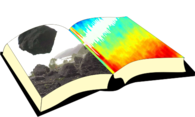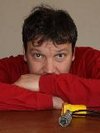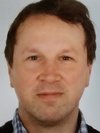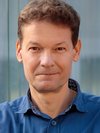Environmental Seismology

Environmental seismology is a central project cluster of the section. Seismic sensors are used to detect, locate, track and quantify geomorphic processes, from landslides and rockfalls over debris flows and fluvial activity, to the interaction of drivers and processes. We work on important process regimes, explored in tailored field focus sites.
eseisToolbox

Seismic data sets are extensive and require specialised software to handle the amount and nature of the data. To foster acceptance and application of the method, and to follow the principles of open and reproducible science, we are developing free and open software, tailored to the needs of users and adopted to the requirements of the environmental focus of the seismic method. The eseis package for the free statistical software R provides the fundamental tools to handle seismic data.
eseisCatalogue

Environmental seismology is an emerging research field and its potential is just being discovered. It was, amongst others, pioneered by the GFZ Geomorphology Section and shows an increasing number of applications. To enable inversion of seismic signals for the underlying geomorphic processes, deriving robust scaling factors and validating seismic models it is essential to have experiment-based reference data including independent confirmation data of the process scales and kinetics. This is the main target of the project eseisCatalogue.
Mass Wasting and Rockwall Dynamics
We investigate the primary elements of the global sediment cascade to study the long term evolution of steep topography landscapes, quantify the relevance and temporal patterns of process triggers, identify coupling mechanisms between processes and infer robust seasonality effects. To effectively pursue these goals we work in designated natural scale experiment prototype landscapes, such as
- the Taroko National Park, Taiwan,
- the Reintal, Germany ,
- the Lauterbrunnen Valley, Switzerland,
- the Illgraben, Switzerland,
- the Askja caldera, Iceland,
- the Saxonian sandstone plateau, and
- instrumented test sites in northern Germany (Demmin) and Switzerland (Tschamut).
Fluvial Seismology
Rivers are the main conveyor belts of sediments and route material from the mountains to the sea. By seismic means, we investigate hydraulic turbulence and sediment transport modes along with threshold conditions and tipping point patterns over several seasonal cycles in key field sites in sensitive regions across the globe. In the Negev Desert, Israel, and New Mexico, USA, we bring together in situ sediment measurements and flow stage information of flash flood events with continuous seismic observations. In the Erlenbach catchment, Switzerland, we explore the slope-channel coupling and interaction. In Nepal, we explore the nature of transient landscape behaviour after perturbations due to extreme events. In the Taroko National Park, Taiwan, we study the long term and event-based behaviour of a river exposed to rapid seismic uplift and frequent Typhoon strikes.
Sea Cliff Evolution
The interaction of the terrestrial margins with the sea is controlled by both the sediment and water flux from the continents and the dynamics of the ocean. This makes coasts extremely sensitive areas and valuable study sites to explore the reaction of landscapes and processes to changing boundary conditions. We explicitly focus on cliff coasts as they are well suited for the seismic approach. We investigate the processes of cliff preparation for failure, the drivers and triggers that lead to collapses and the modes of failure itself. We work on weakly cemented materials on Germany’s largest island, Rügen and rocky coasts exposed to large waves in the northern Atlantic.
Atmosphere-Biosphere-Subsurface Coupling and Feedbacks
Climate as a driver of landscape dynamics ultimately manifests itself as weather conditions that dissipate heat, impulse and momentum as they interact with the ground and vegetation growing on it. We explore these dissipation paths and interaction patterns seismically at the event scale, over seasonal cycles and long term perspectives. We work in almost undisturbed central European prototype landscapes (e.g., the Müritz National Park) and fast eroding, event controlled catchments (e.g., the Taroko National Park, Taiwan).




